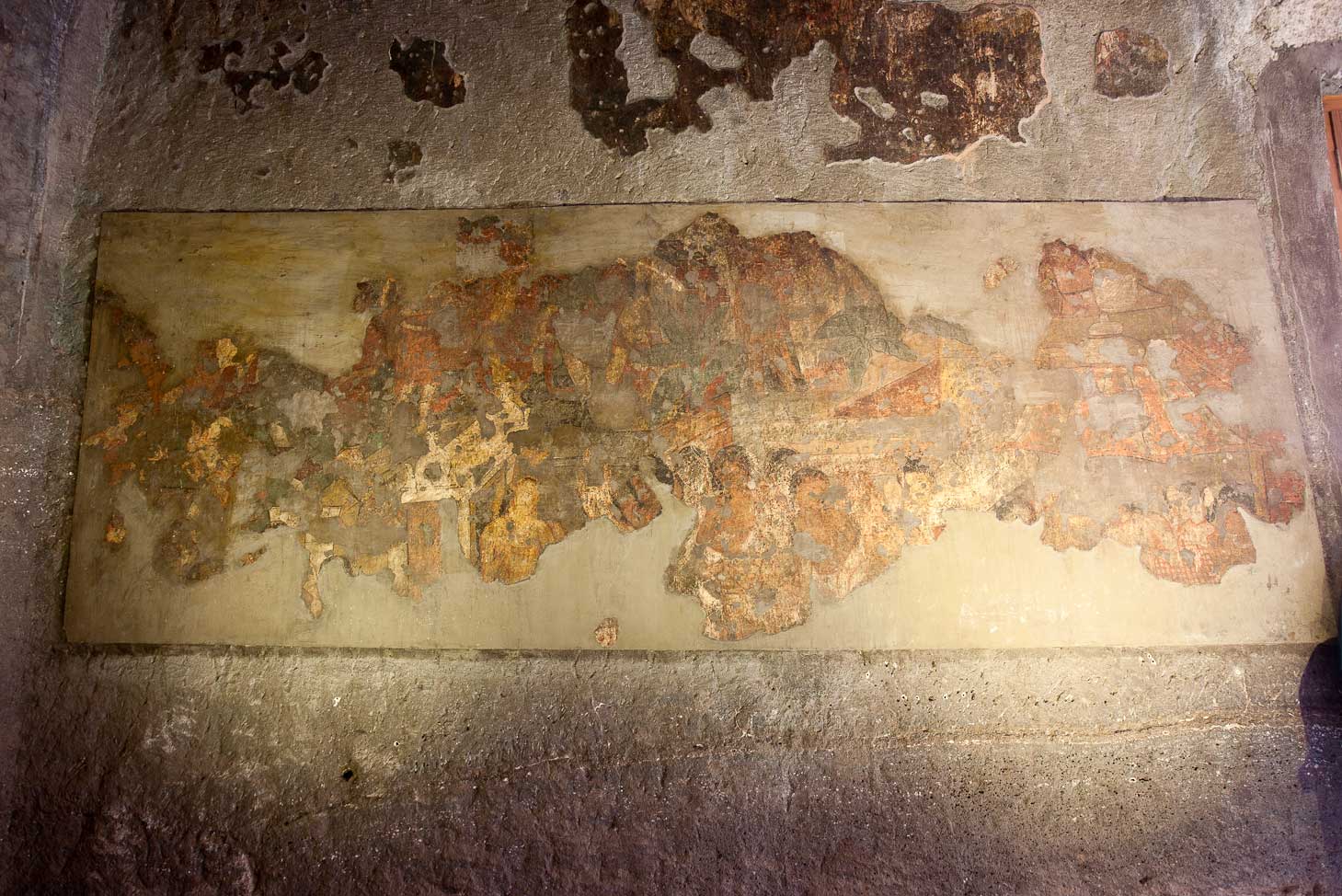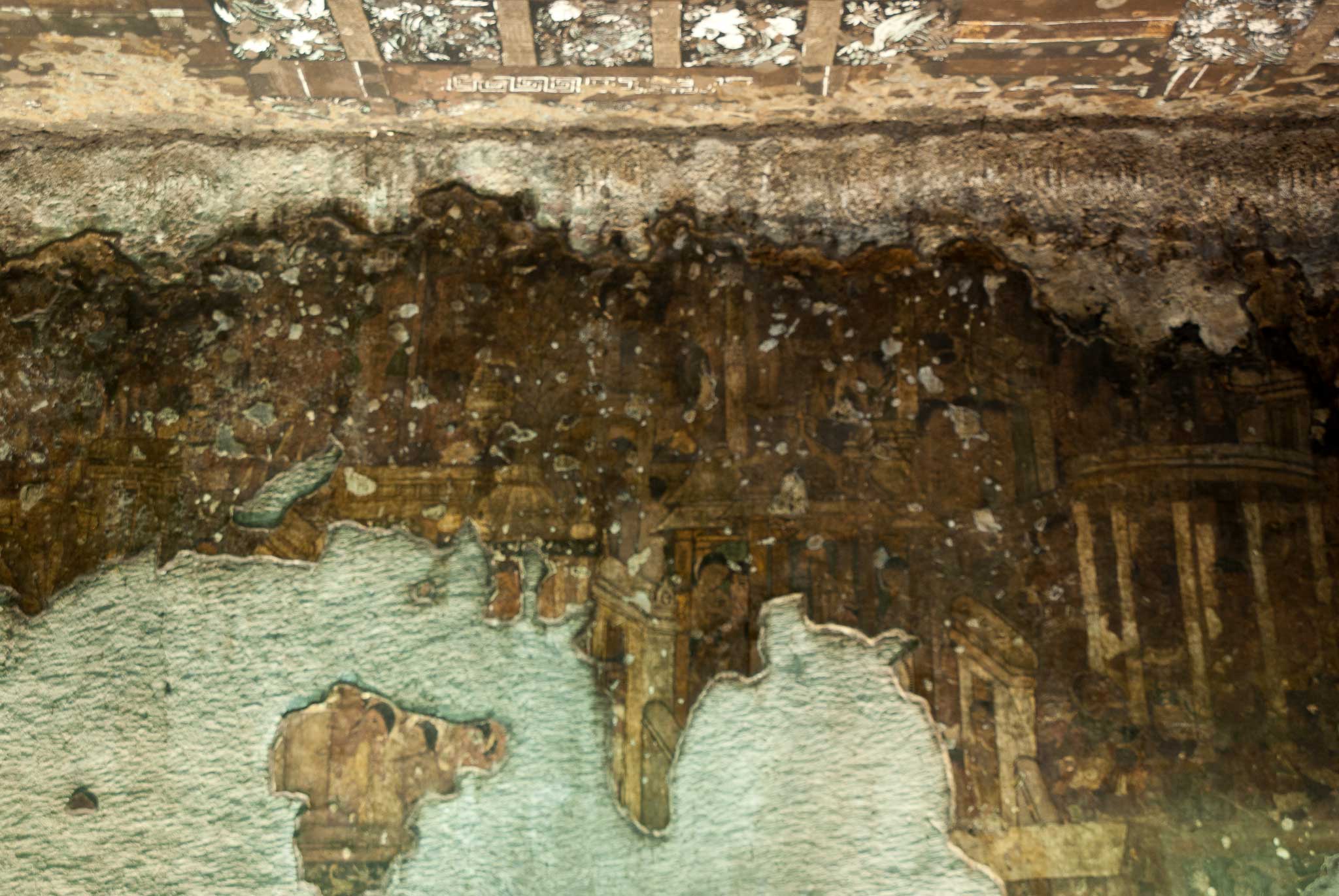Category: Cave 16
-

#42. Viśvantara
Cave No. 16 (No photo.) Identification: Chakravarti in Yazdani (vol. III, 1946, p. 96).— Prince Viśvantara practised extreme form of charity. He never refused donation to anybody. He owned an esteemed elephant and rode often to inspect the donation halls. Once, brahmans from a hostile neighbouring kingdom asked the elephant in donation. Viśvantara gave away the…
-

#33. Bisa
Cave No. 16 Identification: Schlingloff (1977a, p. 466 f.)— Along with his six brothers, a sister, a friend, and servants, a brahman and his family had renounced the worldly life. They dedicated their lives to meditation. Each lived alone in a hut and met once in five days to receive spiritual discourse from their eldest…
-

#62. Kumbha
Cave No. 16 Identification: Schlingloff (1977a, p. 467 f.)— At a time when alcoholic drinks did not exist, a hunter found a cut in a tree from which came drop by drop an intoxicating drink for natural fermentation. With the help of an ascetic, he produced and sold the beverage in the royal cities with…
-

#25. Hastin
Cave No. 16 Identification: Foucher (1921, narrative no. 22).— Once a group of travellers got lost in a forest. They were exhausted and almost close to death, when they met a hastin (elephant) and pleaded with him for help. The elephant, knowing that they would not find food in the oasis, directed them to a…
-

#39. Mūkapaṅgu
Cave No. 16 Identification: Schlingloff (1977a, p. 472–476).— When Prince Udaka (Water) grew up, people would call him Mūkapaṅgu, meaning ‘Dumb and Numb.’ He had seen his father pronouncing death sentences. So, he feigned an incapacity to become a king. Nobody could make him utter a sound or move a limb. The doctors diagnosed that…
-

#30. Mahākapi
Cave No. 16 (No photo.) Identification: Schlingloff (2013, p. 139–143). For the story, vide Cave 17, No. 31. —Source: Singh 2019, 31-33; Schlingloff 2013, I, 139-143 Related Images:
-

#73. Nanda
Cave No. 16 Identification: episodes 7, 8, 10, 11 by Foucher (1921, narrative no. 55).— After the enlightenment, on his first visit to the hometown of Kapilavastu, the Buddha convinced many to follow his doctrine. His half-brother, Nanda, immersed in passion for his wife, Sundarī (Beauteous), missed that sermon. While the Buddha went from house…
-

#91. Mahāprātihārya
Cave No. 16 Identification: Vogel (1948, p. 157). For the legend, vide Cave 1, No. 88. —Source: Singh 2019, 31-33; Schlingloff 2013, I, 488-490 Related Images:
-

#82. Mahāsamāja
Cave No. 16 Identification: Foucher (1921, narrative no. 61).— Near Kapilavastu, the Buddha delivered a sermon to the monks before the Mahāsamāja (Great Assembly) of gods. The four Brahmā gods too moved from heaven, each pronounced a verse and left. The Buddha recognised and disclosed the presence of the deities to the monks: the Four…
-

#64. Bhagavān
Cave No. 16 Identification: episodes 1–5, 8–15, 19–20, 23, 25, 28–29, and 31 by Schlingloff (1983, p. 119–122, 127–131, 135–136, 140, 142–144, 146), episodes 6 and 7 by Yazdani (III, 1946, p. 67, 167), episodes 16, 18, and 24 by Burgess (1879, p. 60 f.), episode 17 by Griffiths (1896, p. 33), and episodes 21–22,…
